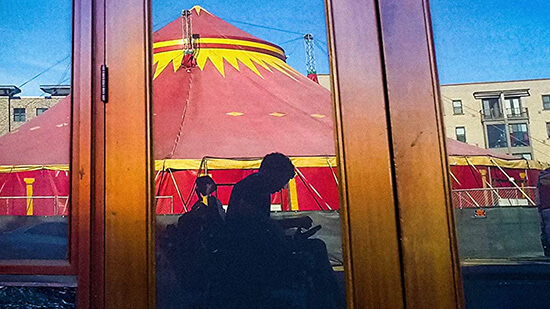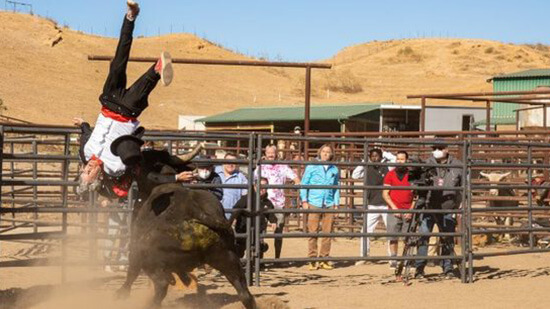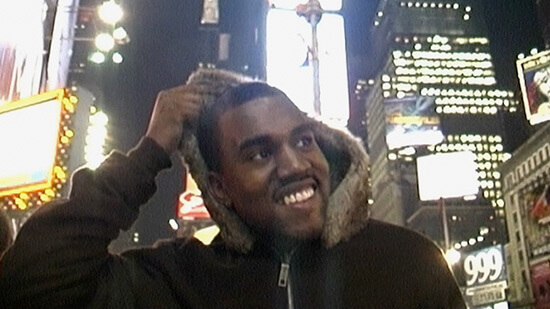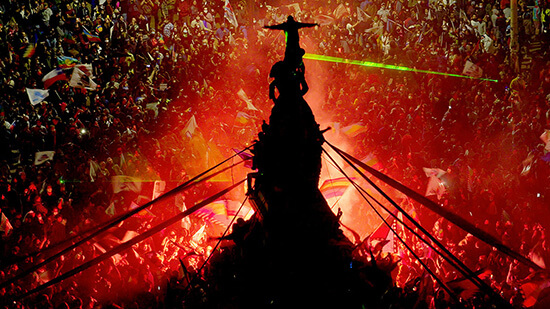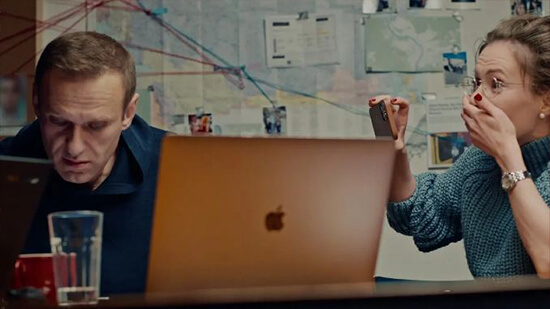The 20 Best Documentaries of 2022
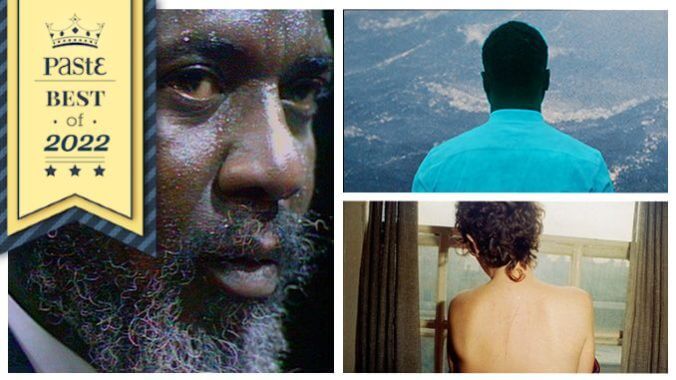
In a year during which the pandemic became something less to emerge from and something more to get used to, the best documentaries of 2022 feel like reclamations—of life, of history, of images and narratives, of cultures and physical space, art and our bodies, of ways of seeing and the responsibility inherent in that. Rarely does non-fiction film as a genre carry themes according to the bounds of year-end lists, so rarer is it that two films, one from a legendary documentary filmmaker, would be released in the same year as resplendent odes to the work of Katia and Maurice Krafft. It’s rare that Zora Neale Hurston acts as patron saint of at least three of the films listed below, and is featured in two explicitly. It’s rare we’re given glimpses of ground-level protest in dramatically different places, in famous museums in New York and Paris, and in the streets of Hong Kong, Santiago and rural Michigan. It’s tempting to call out the monoculture. But really, none of this means anything other than the promise of the documentary form at its most visceral, its most ideal: To immerse us in lives we never imagine we could ever comprehend, reminding us that we can.
Here are our picks for the best documentaries of 2022:
After Sherman
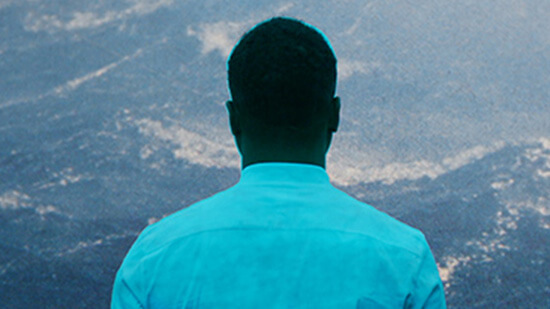
It isn’t until halfway through After Sherman, following an impressionistic survey of his family’s South Carolina legacy via their inherited coastal land, that Jon-Sesrie Goff begins to tell of the 2015 shooting at Emanuel AME Church in Georgetown. Only 20 minutes after Goff’s parents, prominent church leaders in the community, left a quarterly meeting, nine people were murdered. Taking on the untold depth of his parish’s grief and shock, Goff’s father stepped in as interim pastor to help lead a broken flock back to the light. But rather than lean into any shades of true-crime, or bear any responsibility for investigating the tragedy on film, Goff counters with a quieter, more mundane act of violence. At an auction selling plots of land part of the Carolina coastline originally bestowed to Black families following the end of the the Civil War—which includes Goff’s family’s land, only saved from auction, Goff explains, because the family’s heirs split the land amongst siblings, allowing it to stay financially manageable—Goff films white buyers blithely out-bidding people who were promised that land more than a century and a half ago. Even with the camera filming how clearly they don’t give a shit, outside investors ignore the pleas from organizations representing proper heirs. Brutality writ both large and small.
Given to a lyrical attachment to the farms and Gullah culture of his home turf (as well as an immersive, ecosystem-appropriate soundscape), Goff confronts his past as it’s splayed out in the stories of his neighbors and loved ones: In antique agreements between dead people, in letters from great-grandma describing the soil of the family’s tract, in psychogeography and conversations between Black friends in New York talking about how unsafe they feel, and simultaneously how drawn they are to, moving back to the South. As Goff has said of his film, “Rather than depicting Black subjects as at the whim of violent forces, it is a document of the imparting of wisdom between generations of African Americans on how to survive not just materially, but spiritually.” Autobiography, ethnography and reclamation, After Sherman resists pity, instead glowing graciously. It is, if anything, a magnanimous debut. —Dom Sinacola
All the Beauty and the Bloodshed

Nan Goldin’s fingerprints are everywhere. The idiosyncratic photographer, activist and subject of Laura Poitras’ first feature documentary in six years is equal parts icon and iconoclast, an embodiment of what it means to hold two truths—wonderful and terrible—in balance: All the Beauty and the Bloodshed. Similarly, the film is structured into two intersplicing sections charging forward at a rate of devastation your tear ducts absolutely cannot keep up with. One section gives Goldin a platform to chronologically tell her life story. The other follows her years-long fight against the pharmaceutical reign of terror that is the appallingly inhumane Sackler/Purdue Pharma operation. They are essentially the same story, Goldin’s story, but one starts at the beginning and looks ahead while the other starts in recent history and looks back, the two colliding and bringing us into the present, where the Goldin-founded P.A.I.N. (Prescription Addiction Intervention Now) is slowly but surely ripping the Sacklers’ mouth from the teat of the art world it so desperately clings to for influence.
Goldin is narrating. An open book, sadistic charmer and seasoned storyteller, she has a dry, frank, true way with words, the kind of person that doesn’t need many to tell you what it means, a master in the art of phrasing. (“I brought him out and he named me Nan, so we liberated each other,” she says summarily of her connection to a dear, lifelong friend.) Known best for her slideshows, Goldin flips through hundreds of pictures and tells story after story—each one gripping, culminating, well-delivered, giving way to an eagerness for the next—often returning to her most famous collection of over 700 photos on 35mm from 1983-2022, titled The Ballad of Sexual Dependency. Overflowing with candor, the photography presents a life fully lived, aiming to capture the universal impossibility in the push-pull relationship between autonomy and dependency. In between stories, Poitras builds out the generation-spanning criminality of the Sacklers through well-researched talking heads that illuminate the family’s cruelty. As Nan describes herself and her family—whom she defiantly defines as friends, the people whom she’s lived and learned alongside, not a romantic partner or biological family—they were “rebels running from America, living out the life they needed to live.” She says it of herself in the past, but All the Beauty and the Bloodshed shows that spirit still thriving, still moving, still turning the world around it upside-down. —Luke Hicks
Bad Axe

Bad Axe rests in rural Michigan, two and a half hours away from Ann Arbor, where director David Siev’s older sister, Jaclyn, lives with her husband Michael. As Bad Axe begins, David, Jaclyn and Michael are holed up with their mother, Rachel, and father, Chun, in their lovely, spacious enough home, joined by their two other siblings, Raquel and Michelle, and their significant others, David’s fiancée Kat and Raquel’s boyfriend Austin. It’s the moment before the great plunge, where the COVID-19 pandemic forced the nationwide issuance of stay at home orders plus the shutdown of all non-essential businesses.
Bad Axe invites us to relive a period which none of us want to relive, but through the mounting travails of the Sievs, which worsen as the film glides along and uncertainty bleeds into eternity. The deck is precariously stacked against them off the bat; they run a restaurant, named after Rachel, and they’re a Cambodian Mexican American family in rural, Trump-country Michigan. Chun survived the Cambodian Killing Fields and relocated with what was left of his family to Romeo, Michigan. He’s an American. This is irrelevant to people who singly define “American” as “white.” Bad Axe jabs an angry finger at nationalism and ethnocentrism, while parceling out dignity for Chun, whose martial arts prowess and firearms expertise are excellent reasons not to mess with him; for Rachel, Jaclyn, Michelle, and Raquel; and for David, who, as the filmmaker, is given a partial pardon from beating back the harassment the Sieves face as the movie takes us further into COVID, and the closer to the 2020 election.
So as not to inflate Bad Axe’s stature: It’s a simple film about complicated, often painful confirmations about the country we all call home, and about optimism for what that country can look like when people share it with each other. It’s about what happens when your worst nightmare come true. For Chun, it’s also about suffering a nightmare so dreadful that the foundational trauma of your youth seems preferable by comparison. But it’s especially about the way movies change the people who make them and the people who watch them. Bad Axe is a gift. —Andy Crump
Blue Island
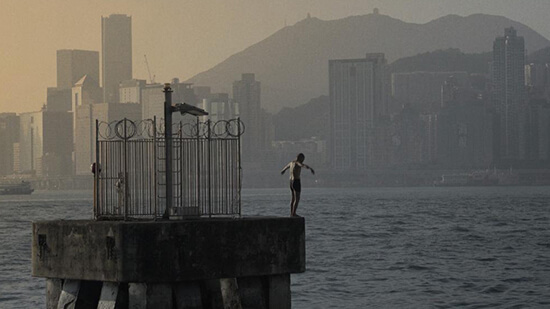
A stomach-churning, ground-level glimpse of mass resistance, Chan Tze-woon’s follow-up to 2016’s Yellowing chronicles the sweeping Hong Kong protests kicked off in 2019 to oppose the Fugitive Offenders extradition bill, quickly expanding to comprise calls for independence in the face of brutal Chinese crackdowns. Far more than visceral documentation, Blue Island is, according to the director, a “desperate attempt to capture the final moments of a sinking island.” Integral to that are Chan’s reenactments of protest movements from three previous flashpoints on the island—1967, 1978 and 1989—casting the mostly young, college-aged activists leading prominent movements today, many who in the wake of the film are either still awaiting trial or serving long sentences for their protests. Likewise, Chan catches up with the people these current activists are playing, decades after they’ve moved on from political work, encouraging the older generations of activists to confront the vitality of the ideals they ostensibly left behind. In that abrasion, as generations rub up against one another, Blue Island becomes a film that offers neither optimism nor pessimism about Hong Kong’s hopes, but a clear-eyed view of what resistance demands of its purest acolytes, and what that means for the rest of us. —Dom Sinacola
Captain Ahab: The Story of Dave Stieb
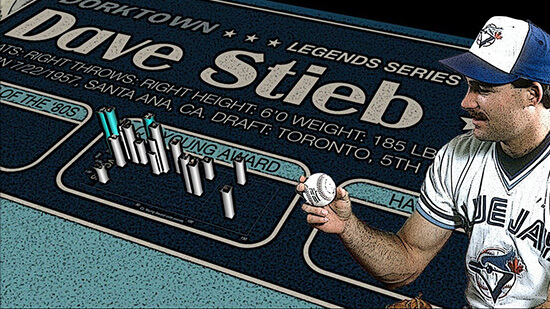
At what’s become a yearly clip, Jon Bois and Alex Rubenstein have crafted long, lovingly researched films bent around the kind of coincidence and improbability that makes for pretty undeniable cinematic bliss. 2020’s 220-minute The History of the Seattle Mariners surveyed the absurdity of one particularly luck-plagued baseball franchise as both symptom and sign of the power of professional sports, while the next year’s 413-minute The History of the Atlanta Falcons leaned in, charting the majesty of God’s Indifference in impressive statistics and a spiritual knack for making esoterica mean something. In 2022, Bois has been especially prolific, directing three films under the duo’s Dorktown banner—including Section 1, a brisk, 42-minute Tony Scott thriller, and Captain Ahab: The Story of Dave Stieb, what feels like Bois and Rubenstein’s storytelling distilled to its purest, most nakedly exciting form.
Ahab ostensibly chronicles major league pitcher Dave Stieb’s attempt at a no-hitter throughout the ’80s, but in detailing the career of a man who’s been unfairly treated by gods and sports writers and fate and fellow teammates alike, Bois does not hesitate, and not for the first time, to present hyperbole as the foundation of Stieb’s narrative: “There’s no way to make the assertion I’m about to make with much confidence, but it’s possible that what Dave Stieb has just experienced is the most impossibly unlikely outcome in the entire history of competitive sports, that has ever come to pass.” The stakes are undeniable, and deservedly so, with an obvious archnemesis in certifiable dickhead Jack Morris and a redemption arc still unfolding today. When, in the film’s final part, Bois and Rubenstein make the case for how Stieb can still get into the Hall of Fame, festooning their own Stieb plaque with the all-caps “HERE’S SOME DAMN CHARTS”—sometimes life delivers you moments for which you have no choice but to tearfully applaud. Regardless, cosmic bleakness accompanies Stieb’s legacy, is in the air and in between words throughout Bois’s film. Not sadness or trauma, but Lovecraftian incomprehensibility, as if unknown powers are leaking like a pestilence into reality to fuck with this guy. “How can this happen to me?” he asks no one, and everyone, at one point. I don’t know, Dave, but you don’t deserve whatever “this” is. I hate baseball writers now too. —Dom Sinacola
Children of the Mist
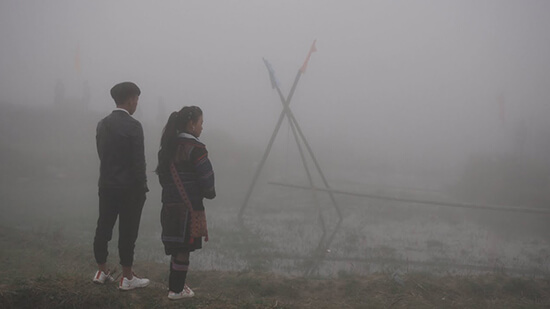
What’s most disturbing about Diem HÀ Lê’s directorial debut isn’t the subject matter but rather how nonchalantly it’s treated by those in front of her lens. Among the Hmong people of North Vietnam, it’s customary for young girls to be kidnapped from their homes, forced to become child brides for whomever steals them away. Children of the Mist’s bucolic setting—this mountain community feels like it exists in a mythic past—belies the Hmong’s cruel ritual, and the film focuses on 13-year-old Di, who fears that she could be the next target. But even her parents aren’t all that concerned—after all, it’s tradition—and Diem serves as a silent observer as the townspeople play kidnapping “games,” mocking the terror that awaits these girls. Children of the Mist is deceptively restrained in its first half, but that leads to a finale that’s raw in its pain and anguish. Few recent documentaries have captured anything so heart-wrenching as Di’s abduction, with Diem trying frantically to intervene, her camera recording every traumatizing moment. This is sobering filmmaking that illustrates a terrible injustice and the patriarchal attitudes that keep it thriving. —Tim Grierson
Descendant

An examination and reclamation of identity in the wake of the recovery of the slave ship Clotilda, a source of long-buried shame for many families in Mobile, Alabama, Margaret Brown’s Descendant at times operates as a litany of ignorance. As news outlets and National Geographic come into Mobile to help finally recover the wreckage-as evidence surfaces that the wreckage may have been found and re-sunk that that long ago-the descendants of the Africans kidnapped and stolen to the Gulf on the Clotilda find they have less and less control over who gets to tell their families’ stories. When National Geographic’s much-too-smiley “archaeologist-in-residence” calls the recreated mock-up illustration of the slave ship, full of bodies, a “really wonderful drawing” and the head of the underwater survey team has to say, “Well, I wouldn’t call it wonderful” in front of a group of descendants seeing this trauma in full-bloom for the first time; when a descendant of the Clotilda’s Captain Foster, getting past his nervousness as he’s welcomed by the Africatown community, tries to describe to the descendants of the people Foster kidnapped and enslaved about how, compared to most slave owners as far as he could tell, Foster treated his slaves with respect. For every casually degrading gesture or remark, Brown counters with a reading from Zora Neale Hurston’s Barracoon, about the original Africatown founders, or with Hurston’s own voice, refusing to allow anyone but the proper descendant’s say. Brown returns, too, to the warm nature of the contemporary Africatown community, how welcoming they are to undeserving small white men and deserved tourism dollars alike. —Dom Sinacola
EAMI
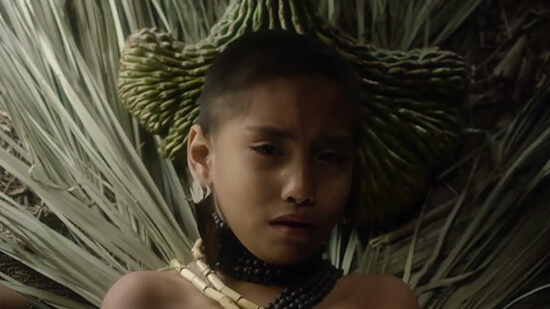
Winner of the Tiger Competition’s top prize at 2022’s International Film Festival Rotterdam, Paraguayan director Paz Encina’s EAMI attempts to capture a disappearing way of life. Like in Emilia Mello’s recent No Kings, deforestation has devastated everything for a small indigenous community. Like Jessica Beshir’s Faya Dayi, EAMI tells of a dying culture through the grand, imagistic movements of myth, preserving the stories, sounds and sights of Paraguay’s Ayoreo-Totobiegosode people in celluloid. We’ve wandered past the point of no return, and now all we can do is document what’s left before it’s gone.
In voiceover, Eami (Anel Picaneri), a little Ayoreo-Totobiegosode girl, tells of the destruction of her village and her flight into the rainforest. With a talking lizard companion, she wanders as a transformed bird-god to collect any survivors from her people’s diaspora. “Eami,” we’re told immediately, means “forest” in Ayoreo, as well as “world,” all connected and symbiotic. Industrialization has obliterated everything they know. Amidst stentorian bird cackles and the drone of machines pulling the earth apart, Encina weaves in the testaments and recollections of surviving Ayoreo-Totobiegosode people, who tell of outsiders, the so-called coñone (“the insensitive”), mostly workers and migrants employed to violently displace locals. “Shall we all have to heal eternally?” Eami asks, wondering how deep trauma goes. A man answers, recalling his own village’s destruction: “If they kill us, best if they kill us all, so no one is left to regret it.” As we study Eami’s face in close up, Eami’s lizard reminds her of her responsibility, “Remember, we were the ones who lived here…In our eyes we keep all the landscapes.” Through lush soundscapes and prelapsarian dream logic, Encina attempts to do the same. It’s all anyone can do anymore. —Dom Sinacola
Fire of Love

Director Sara Dosa knits together an awesome array of 16 mm footage to tell the doomed love story of volcanologists Katia and Maurice Krafft against the bright, molten backdrop of their shared obsession. Foregrounding the couple’s demise during the explosion of Mount Unzen in Japan in 1991, Dosa allows their charm and enthusiasm to keep the film’s tone afloat—much like Maurice’s unrealized dream of riding a customized canoe down a river of lava—reinforcing the drama of their romance in lovely animation and Miranda July’s voiceover, musing about hidden fault lines and fate and, perhaps too late in the film, the ways their work has contributed inimitably to saving countless lives. Even if the film is too committed to being a biography that reaches past their images, the Kraffts’ footage stands alone, thrilling and magnificently shot, as much a testament to their lives as a reason to catch Fire of Love on as towering a screen as possible. —Dom Sinacola
The Fire Within: A Requiem for Katia and Maurice Krafft
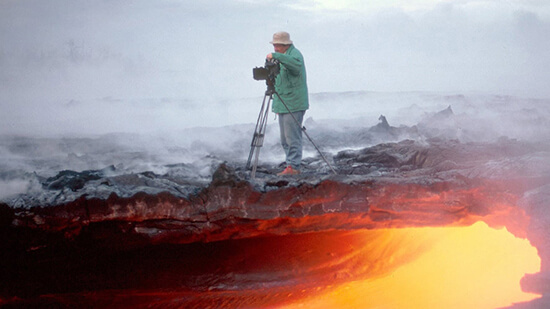
Cut like the History Channel special it is, The Fire Within is parsed with pauses for commercial breaks as if the Channel didn’t even ask Herzog to do that. But such is its ecstatic energy: a documentary that exists for itself despite coming out the same year as a documentary about the same subject, wholly apart from it, a series of small epiphanies in images one might catch briefly flipping through cable channels, old fashioned but transcending that form through the melodrama of every moment, through every unironic declaration of the dream-like grandeur of what the Kraffts caught on film. Like Sara Dosa’s Fire of Love, The Fire Within introduces us to Maurice and Katia Krafft, iconic volcanologists, via their incomprehensibly moving documentary films, but Herzog prequalifies the lack of biographical rigor by admitting his only goal is to celebrate the wonder of the Krafft’s filmmaking, and not, necessarily, their lives. He then does exactly that, running through their oeuvre as artists with an eye for eras, beginning with their amateurish beginnings—“Their films look like home movies shot by tourists. Everything is unspectacular”—and then eventually showering praise on their compositions, as well as their move into more “humanistic” themes. As is his wont, Herzog scores broiling lava and the otherworldly mutations of molten rock to “Pie Jesu” and Verdi’s “Requiem”—as well as two playful, aching ballads by Mexican artist Ana Gabriel—and it’s difficult to not be swept up in Herzog’s awe for what is clearly awe-inspiring. Romanced by it.
Whether Herzog is aware of Fire of Love or not (I’d bet he’d say he isn’t) hardly matters weighed against the irony of its existence as a special meant for the History Channel. That most people won’t see this in a theater, but rather via a streaming service that likely can’t keep up with the breathtaking clarity of the images, inherently limits Herzog’s scope. Still, the film thrives on that tension, drinks in the impossibility of its content, knows intuitively its limits and context. I’m reminded of Herzog’s recent doc, Fireball, which clips some scenes from Mimi Leder’s Deep Impact, one of two asteroid movies from 1998, the other being Armageddon, just two movies about the same thing in the same year, one never really acknowledging the other as if we’re blinking between parallel universes. There was Volcano and Dante’s Peak in 1997. The zeitgeist in superposition. But Fire of Love is about the Kraffts while The Fire Within is about the films they made—about the power of putting a camera where no one has put one before, about the images they wrestled “from the devil’s claws” as Herzog puts it, all to give us a glimpse of “a vision that exists only in dreams.” Who should bear the responsibility of the Krafft’s footage? Herzog, like his subjects, longs to be swallowed by a pyroclastic flow. You know Sara Dosa, like most healthy adults, does not. —Dom Sinacola
-

-

-

-

-

-

-

-

-

-

-

-

-

-

-

-

-

-

-

-

-

-

-

-

-

-

-

-

-

-

-

-

-

-

-

-

-

-

-

-

